-
 Bitcoin
Bitcoin $105,515.7682
-0.75% -
 Ethereum
Ethereum $2,550.8526
-3.88% -
 Tether USDt
Tether USDt $1.0004
0.02% -
 XRP
XRP $2.1386
-2.78% -
 BNB
BNB $653.0175
-0.31% -
 Solana
Solana $146.9461
-4.05% -
 USDC
USDC $0.9998
0.02% -
 Dogecoin
Dogecoin $0.1782
-2.00% -
 TRON
TRON $0.2708
-0.25% -
 Cardano
Cardano $0.6369
-3.90% -
 Hyperliquid
Hyperliquid $41.2211
0.21% -
 Sui
Sui $3.0463
-5.78% -
 Bitcoin Cash
Bitcoin Cash $438.0762
2.18% -
 Chainlink
Chainlink $13.2264
-5.73% -
 UNUS SED LEO
UNUS SED LEO $8.9649
0.98% -
 Stellar
Stellar $0.2593
-3.86% -
 Avalanche
Avalanche $19.1916
-5.96% -
 Toncoin
Toncoin $3.0052
-3.20% -
 Shiba Inu
Shiba Inu $0.0...01203
-1.86% -
 Hedera
Hedera $0.1572
-4.58% -
 Litecoin
Litecoin $85.5869
-1.34% -
 Polkadot
Polkadot $3.8083
-3.62% -
 Ethena USDe
Ethena USDe $1.0003
-0.02% -
 Monero
Monero $307.3843
-3.36% -
 Dai
Dai $0.9998
-0.02% -
 Bitget Token
Bitget Token $4.5079
-2.03% -
 Uniswap
Uniswap $7.4836
-2.67% -
 Pepe
Pepe $0.0...01116
-3.77% -
 Aave
Aave $282.2684
-3.42% -
 Pi
Pi $0.5680
-7.78%
How deep is the retracement normal after breaking through the neckline? This ratio is very important!
A neckline breakout in crypto trading signals a potential trend reversal, and retracements below 50% Fibonacci are typically healthy, while deeper pullbacks may indicate weakness or manipulation.
Jun 12, 2025 at 05:21 am
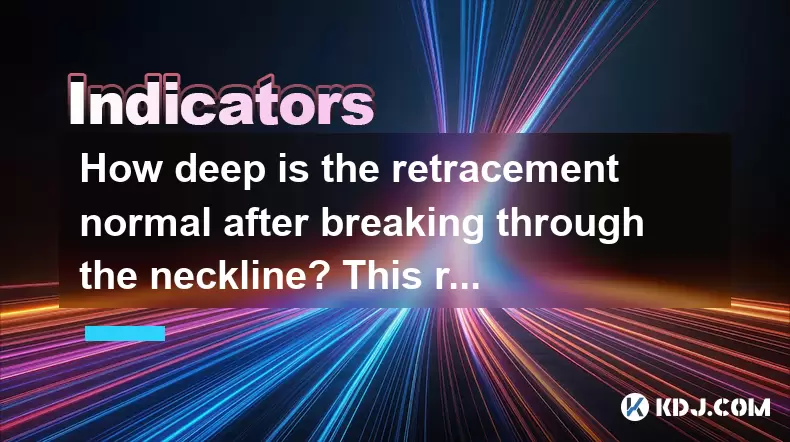
Understanding the Neckline in Technical Analysis
In technical analysis, particularly within the realm of cryptocurrency trading, the concept of a neckline plays a crucial role in identifying potential trend reversals or continuations. The neckline is commonly associated with chart patterns such as the head and shoulders, inverse head and shoulders, and even double top or double bottom formations. When a price breaks through the neckline, it signals a shift in market sentiment.
For example, in a bearish head and shoulders pattern, the price forms three peaks, with the middle peak (the head) being the highest. The two shoulders are roughly equal in height and sit on either side of the head. The neckline acts as a support level during this formation. Once the price breaks below this line, it often leads to a significant downward move.
However, after such a breakout occurs, traders frequently ask: how deep can the retracement be before it invalidates the pattern?
The retracement depth is a key metric that determines whether the breakout is valid or merely a false signal.
What Is a Retracement After a Breakout?
A retracement refers to a temporary reversal in the direction of price movement after a breakout from a key level — in this case, the neckline. In the context of a bullish breakout, for instance, a retracement would mean the price pulls back slightly before continuing its upward trajectory. Similarly, in a bearish breakout, the price might rise briefly before resuming its decline.
It’s essential to understand that not all retracements indicate weakness in the new trend. In fact, many strong trends include small pullbacks that serve to consolidate momentum. However, if the retracement is too deep, it may suggest that the initial breakout lacked conviction or that institutional players are manipulating the price to trap retail traders.
The retracement depth should not exceed 50% of the prior swing in most reliable scenarios.
This means that if the price has broken out of a pattern by, say, $100, then any retracement beyond $50 could raise red flags about the strength of the breakout.
Measuring the Retracement Using Fibonacci Levels
One of the most widely accepted tools for measuring retracements is the Fibonacci retracement tool. This analytical instrument helps identify potential levels where the price may find support or resistance after a significant move. The key Fibonacci levels used are:
- 23.6%
- 38.2%
- 50%
- 61.8%
- 78.6%
When analyzing a breakout from the neckline, traders typically draw the Fibonacci levels from the start of the pattern to the point of the breakout. For example, in a head and shoulders pattern, you’d draw from the left shoulder's high to the head's low.
If the price retraces only to the 23.6% or 38.2% level and then resumes the original trend, this is considered a healthy correction. However, if it moves beyond the 50% level, caution is warranted. A move past 61.8% often signals that the breakout may have been weak or manipulated.
Traders should closely monitor whether the price respects the 50% Fibonacci level after breaking the neckline.
Practical Examples in Cryptocurrency Markets
Let’s take a real-world example from the Bitcoin market. Suppose BTC forms a classic inverse head and shoulders pattern over several weeks. The neckline is identified at $30,000. As the price surges above this level with volume confirmation, a bullish breakout is declared.
Shortly after, the price retraces to around $29,000. Using the Fibonacci tool from the lowest point of the head (say, $27,000) up to the breakout point ($30,000), we find that $29,000 aligns with the 33% retracement level. Since this is well within the safe zone (below 50%), the retracement is seen as a buying opportunity rather than a sign of weakness.
Conversely, imagine Ethereum forming a head and shoulders pattern with a neckline at $2,000. After a sharp drop below this level, the price rebounds to $1,900. If the head started at $2,400, then the full swing was $400. A $100 rebound equates to a 25% retracement — again, a normal and acceptable pullback.
But if ETH had bounced back to $1,800 (a 50% retracement), or worse, retested the $2,000 level, it would suggest that bears are not fully in control and that bulls are trying to regain dominance.
Monitoring these retracement zones helps traders distinguish between genuine breakouts and fakeouts.
How to Use Volume to Confirm Retracement Validity
Volume is an indispensable factor when evaluating the legitimacy of a breakout and subsequent retracement. In a healthy breakout scenario, volume should increase significantly as the price pierces the neckline. Then, during the retracement phase, volume should decrease.
Here’s how to analyze it step-by-step:
- Draw the neckline clearly using historical price data.
- Observe the volume bars or candles at the moment of the breakout — they should be notably larger than average.
- During the retracement, check if the volume remains subdued compared to the breakout period.
- Look for signs of rejection at key Fibonacci levels, especially 38.2% and 50%.
If volume increases during the retracement, especially near the 50% level, it may indicate that institutions or large traders are stepping in to test the breakout’s resilience. This doesn’t necessarily invalidate the pattern but requires closer attention.
High volume during breakout + low volume during retracement = stronger likelihood of a valid trend continuation.
Frequently Asked Questions
Q1: Can a retracement go beyond the 50% Fibonacci level and still be valid?
Yes, in some cases, especially in volatile cryptocurrency markets, the price may briefly exceed the 50% retracement before continuing the trend. However, sustained trading beyond this level increases the risk of the breakout being invalidated.
Q2: What time frame is best for analyzing neckline breakouts and retracements?
Higher time frames like the 4-hour or daily charts provide more reliable signals. Lower time frames can produce noise and false signals due to increased volatility and manipulation.
Q3: How do I differentiate between a retracement and a reversal after a neckline breakout?
A retracement is a short-term pullback within the context of a larger trend. A reversal implies a complete change in trend direction. Watch for candlestick patterns, moving averages, and volume to distinguish between the two.
Q4: Should I enter a trade immediately after a neckline breakout or wait for a retracement?
Both strategies have merit. Entering at the breakout offers early entry but carries the risk of fakeouts. Waiting for a retracement provides better risk-reward ratios but may miss part of the move. Combining both with proper risk management yields optimal results.
Disclaimer:info@kdj.com
The information provided is not trading advice. kdj.com does not assume any responsibility for any investments made based on the information provided in this article. Cryptocurrencies are highly volatile and it is highly recommended that you invest with caution after thorough research!
If you believe that the content used on this website infringes your copyright, please contact us immediately (info@kdj.com) and we will delete it promptly.
- Decentralized Finance Took Center Stage in Washington as the SEC's Latest Policy Roundtable Spotlighted Code-Driven Innovation
- 2025-06-14 05:50:12
- Bitcoin (BTC) Near the $110,000 Mark, Up Nearly 4.5% in the Last Seven Days
- 2025-06-14 05:45:12
- Good Morning, Asia. Here's what's making news in the markets:
- 2025-06-14 05:45:12
- Bitcoin (BTC) Price Tests $110k Resistance as Whales Pause Accumulation
- 2025-06-14 05:40:12
- IMX Token Unlock Event Happening This Week Will Send 24.52M IMX (US$12.67M) to Circulating Supply
- 2025-06-14 05:40:12
- Ray Dalio Praises Bitcoin as a New Form of Hard Money
- 2025-06-14 05:35:13
Related knowledge

Is it an opportunity for the long positive line with large volume to break through the platform and then shrink back?
Jun 14,2025 at 04:42am
Understanding the Long Positive Line with Large VolumeIn technical analysis, a long positive line refers to a candlestick pattern where the closing price is significantly higher than the opening price, often indicating strong buying pressure. When this occurs alongside large volume, it suggests that market participants are actively involved in pushing t...
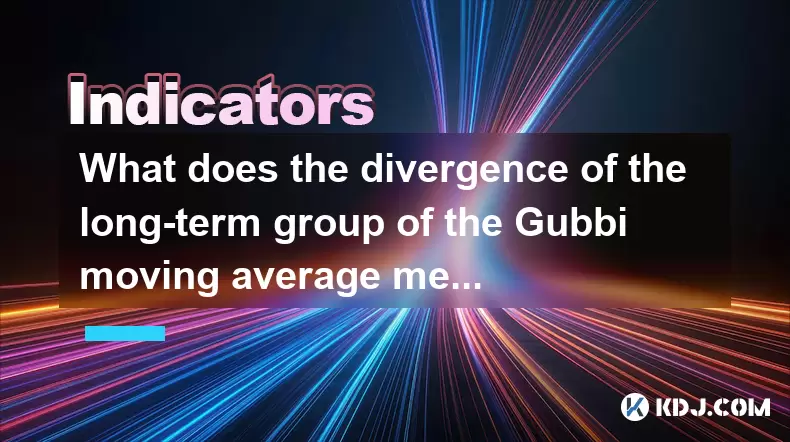
What does the divergence of the long-term group of the Gubbi moving average mean? How long can the trend last?
Jun 14,2025 at 02:56am
Understanding the Gubbi Moving AverageThe Gubbi moving average is a technical indicator used by traders in cryptocurrency markets to identify trends and potential reversals. Unlike traditional moving averages, the Gubbi variant incorporates unique calculations that emphasize price momentum and volatility adjustments. This makes it particularly useful fo...
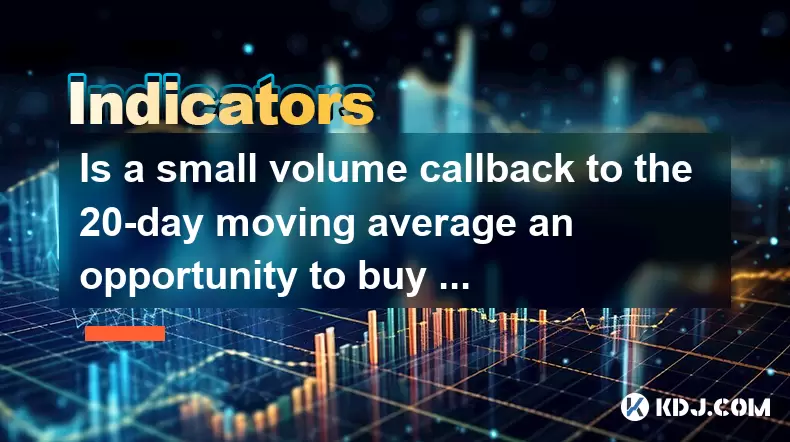
Is a small volume callback to the 20-day moving average an opportunity to buy low? What is the key to look at?
Jun 14,2025 at 02:28am
Understanding the 20-Day Moving Average in Cryptocurrency TradingIn cryptocurrency trading, the 20-day moving average (20DMA) is a commonly used technical indicator that helps traders assess the short-term trend of an asset. It calculates the average price of a cryptocurrency over the last 20 days and smooths out price volatility. When a coin experience...
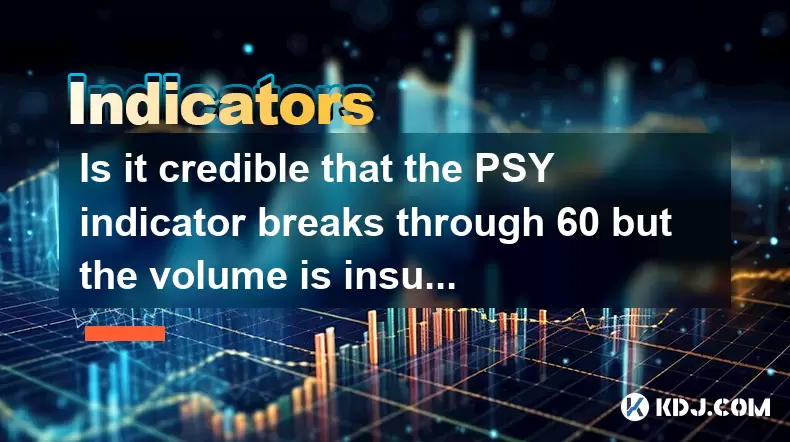
Is it credible that the PSY indicator breaks through 60 but the volume is insufficient?
Jun 14,2025 at 12:14am
Understanding the PSY Indicator in Cryptocurrency TradingThe Psychological Line (PSY) indicator is a momentum oscillator used primarily to measure the sentiment of traders and investors in financial markets, including the cryptocurrency space. It calculates the ratio of days where prices closed higher versus lower over a specified period, typically 12 o...
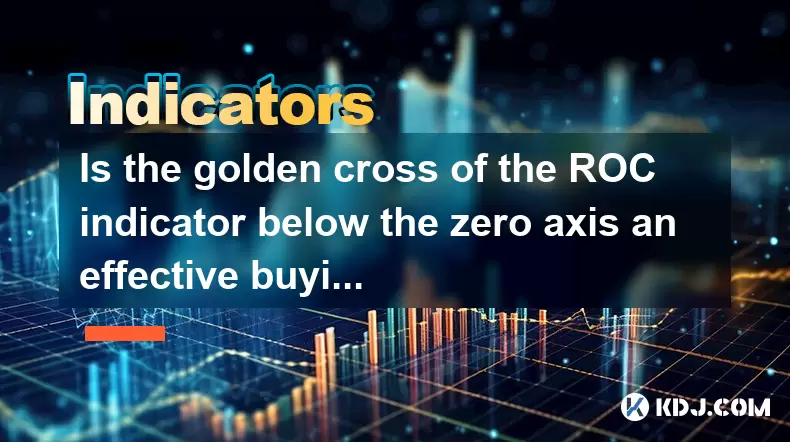
Is the golden cross of the ROC indicator below the zero axis an effective buying point?
Jun 14,2025 at 01:29am
Understanding the ROC Indicator and Its SignificanceThe Rate of Change (ROC) indicator is a momentum oscillator used in technical analysis to measure the percentage change in price between the current closing price and the closing price from a set number of periods ago. This tool helps traders assess the speed at which prices are changing, offering insi...

Is the sudden shortening of the MACD red column a signal of a peak? How to deal with it?
Jun 14,2025 at 06:01am
Understanding the MACD Indicator in Cryptocurrency TradingThe Moving Average Convergence Divergence (MACD) is one of the most widely used technical indicators among cryptocurrency traders. It helps identify potential trend reversals, momentum shifts, and entry or exit points. The MACD consists of three main components: the MACD line, the signal line, an...

Is it an opportunity for the long positive line with large volume to break through the platform and then shrink back?
Jun 14,2025 at 04:42am
Understanding the Long Positive Line with Large VolumeIn technical analysis, a long positive line refers to a candlestick pattern where the closing price is significantly higher than the opening price, often indicating strong buying pressure. When this occurs alongside large volume, it suggests that market participants are actively involved in pushing t...

What does the divergence of the long-term group of the Gubbi moving average mean? How long can the trend last?
Jun 14,2025 at 02:56am
Understanding the Gubbi Moving AverageThe Gubbi moving average is a technical indicator used by traders in cryptocurrency markets to identify trends and potential reversals. Unlike traditional moving averages, the Gubbi variant incorporates unique calculations that emphasize price momentum and volatility adjustments. This makes it particularly useful fo...

Is a small volume callback to the 20-day moving average an opportunity to buy low? What is the key to look at?
Jun 14,2025 at 02:28am
Understanding the 20-Day Moving Average in Cryptocurrency TradingIn cryptocurrency trading, the 20-day moving average (20DMA) is a commonly used technical indicator that helps traders assess the short-term trend of an asset. It calculates the average price of a cryptocurrency over the last 20 days and smooths out price volatility. When a coin experience...

Is it credible that the PSY indicator breaks through 60 but the volume is insufficient?
Jun 14,2025 at 12:14am
Understanding the PSY Indicator in Cryptocurrency TradingThe Psychological Line (PSY) indicator is a momentum oscillator used primarily to measure the sentiment of traders and investors in financial markets, including the cryptocurrency space. It calculates the ratio of days where prices closed higher versus lower over a specified period, typically 12 o...

Is the golden cross of the ROC indicator below the zero axis an effective buying point?
Jun 14,2025 at 01:29am
Understanding the ROC Indicator and Its SignificanceThe Rate of Change (ROC) indicator is a momentum oscillator used in technical analysis to measure the percentage change in price between the current closing price and the closing price from a set number of periods ago. This tool helps traders assess the speed at which prices are changing, offering insi...

Is the sudden shortening of the MACD red column a signal of a peak? How to deal with it?
Jun 14,2025 at 06:01am
Understanding the MACD Indicator in Cryptocurrency TradingThe Moving Average Convergence Divergence (MACD) is one of the most widely used technical indicators among cryptocurrency traders. It helps identify potential trend reversals, momentum shifts, and entry or exit points. The MACD consists of three main components: the MACD line, the signal line, an...
See all articles

























































































